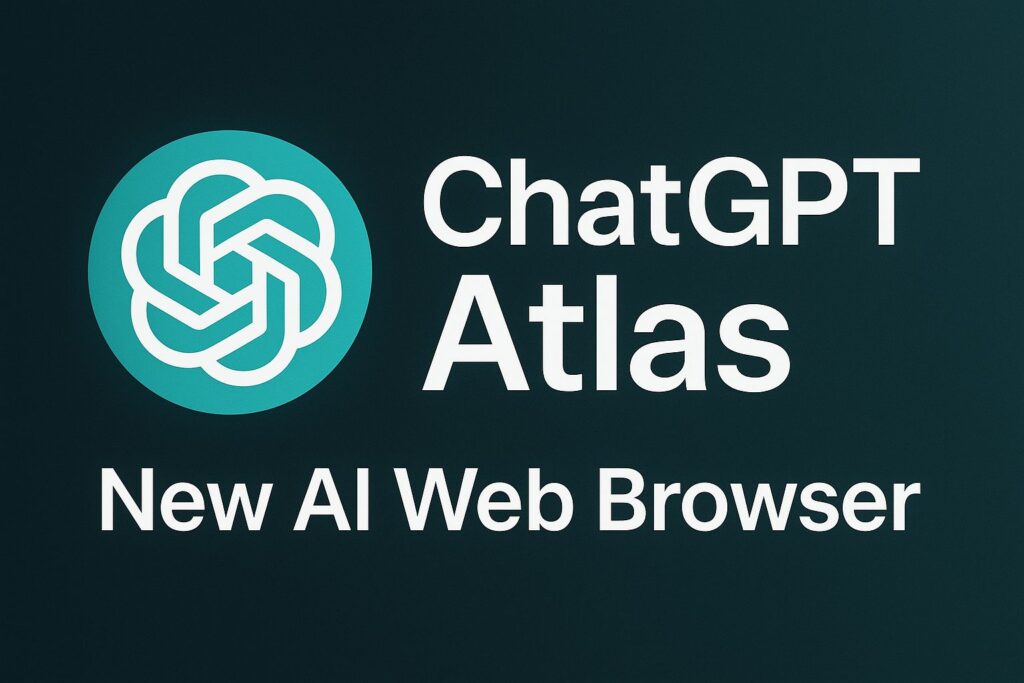1.1. Understanding the Importance of Website Structure Optimization
In the world of digital marketing, having an effective website is crucial for success. But it’s not just about creating a visually appealing site with compelling content; the underlying website structure plays a pivotal role in determining its overall performance. Website structure optimization is the process of strategically organizing and designing the layout, navigation, and URLs of a website to enhance its search engine visibility, user experience, and overall efficiency.
1.2. Defining Website Structure Optimization
Website structure refers to the way information is organized and interconnected within a website. Website structure optimization involves crafting a coherent and user-friendly architecture that aligns with the website’s objectives and serves both search engines and human visitors. Let’s explore the key components that contribute to a well-structured website, setting the foundation for a successful online presence.
The Fundamentals of Website Structure
2.1. Organizing Your Content for Maximum Impact
Creating Logical Categories and Subcategories:
To optimize website structure, start by organizing content into logical categories and subcategories. Grouping related content together improves user navigation and helps search engines understand the site’s content hierarchy.
Understanding the Hierarchy of Information:
A well-defined information hierarchy makes it easier for users to locate the desired information quickly. By presenting content in a hierarchical manner, you guide users through a seamless and intuitive journey on your website.
Incorporating Keyword Research into the Structure:
Keyword research plays a vital role in website structure optimization. Identifying relevant keywords and incorporating them into your content organization can boost your site’s SEO performance and increase its visibility in search engine results.
2.2. Navigation Best Practices
Designing User-Friendly Navigation Menus:
The navigation menu is a critical element of a website’s user experience. Clear, concise, and easy-to-navigate menus ensure visitors can find what they need efficiently, leading to increased user satisfaction and engagement.
Implementing Breadcrumbs for Enhanced User Experience:
Breadcrumbs are a navigational aid that displays the hierarchical path to the current page. They improve user understanding of their location within the site and enable easy navigation back to previous pages.
Internal Linking Strategies for Improved Crawling:
Strategic internal linking helps search engines discover and index content effectively. By interlinking relevant pages, you can establish a network of connections that enhances both user experience and search engine crawlability.
2.3. Mobile Responsiveness and Adaptability
Importance of Mobile-Friendly Website Structure:
In the mobile era, having a responsive website is non-negotiable. A mobile-friendly website structure ensures that your site adapts to different screen sizes and devices, providing an optimal user experience across platforms.
Responsive Design vs. Dynamic Serving vs. Separate URLs:
There are multiple approaches to achieving mobile-friendliness, including responsive design, dynamic serving, and separate URLs. Understanding the pros and cons of each method helps you choose the most suitable option for your website.
Mobile Navigation Considerations:
Mobile users have specific navigation needs. Streamlining menus, optimizing buttons and links, and ensuring smooth scrolling are essential to create a mobile navigation experience that keeps visitors engaged.
URL Structure Optimization
3.1. Crafting SEO-Friendly URLs
URL Length and Readability:
Short and descriptive URLs are preferred by both users and search engines. Avoid lengthy URLs with unnecessary parameters or special characters, as they can be confusing and deter users from clicking.
Incorporating Target Keywords in URLs:
Strategically including target keywords in URLs can provide search engines with additional context about your content. This practice can positively impact your website’s search engine rankings.
Avoiding Common URL Structure Mistakes:
Steer clear of common URL structure pitfalls, such as using stop words, irrelevant numbers, or dynamically generated strings. Clean, human-readable URLs are more memorable and shareable.
3.2. URL Canonicalization and Consistency
Dealing with Duplicate Content Issues:
Duplicate content can harm your website’s SEO efforts. URL canonicalization, by specifying the preferred version of a URL, helps search engines identify the original content source and avoid indexing duplicate pages.
Setting Preferred Domain (www vs. non-www):
Choosing between the www and non-www versions of your domain is essential for maintaining consistent URL structure and avoiding duplicate content problems.
Handling URL Parameters Effectively:
URL parameters can create duplicate content issues if not managed correctly. Use URL parameter handling tools in your website’s backend to instruct search engines on how to treat different parameter variations.
Site Speed and Performance Optimization
4.1. Understanding the Impact of Website Speed
Search Engine Ranking Factor:
Site speed is a crucial ranking factor in search engine algorithms. A fast-loading website is more likely to rank higher in search results, leading to increased organic traffic and visibility.
User Experience and Bounce Rates:
Slow-loading websites frustrate users and increase bounce rates, negatively affecting user experience. Optimizing site speed ensures visitors stay engaged and explore more of your content.
Mobile Site Speed Considerations:
Mobile users possess elevated expectations regarding websites that load quickly. Optimizing for mobile site speed improves user satisfaction and contributes to better search engine rankings.
4.2. Optimizing Media for Improved Loading Times
Compressing Images and Videos:
Large media files can significantly impact page load times. Compressing images and videos without compromising quality reduces file sizes and speeds up content delivery.
Leveraging Lazy Loading Techniques:
Lazy loading delays the loading of non-visible media elements until users scroll to them. This technique saves bandwidth and minimizes initial page load times, especially for content-rich pages.
Minimizing CSS and JavaScript Files:
Streamlining CSS and JavaScript files reduces HTTP requests, leading to faster page loading. Combining and minifying these files helps optimize your website’s performance.
4.3. Hosting and Server Considerations
Choosing the Right Hosting Provider:
Selecting a reliable and high-performance hosting provider is vital for website speed and uptime. Opt for a hosting plan that aligns with your website’s traffic and resource requirements.
Utilizing Content Delivery Networks (CDNs):
CDNs distribute website content across multiple servers worldwide, enabling faster content delivery to users from servers geographically closer to them.
Monitoring and Improving Server Response Times:
Regularly monitoring server response times helps identify performance bottlenecks. Implement necessary optimizations and upgrades to ensure swift server responses.
Technical SEO and Website Structure
5.1. XML Sitemaps and Crawling Efficiency
Generating and Submitting XML Sitemaps:
XML sitemaps offer search engines a comprehensive overview of the content available on your website.. Submitting sitemaps to search engines improves the indexing of your pages.
Importance of Regularly Updating Sitemaps:
As your website evolves, updating XML sitemaps ensures search engines can discover new pages and changes, preventing potential indexing issues.
Handling XML Sitemap Errors:
Monitor and address any errors or warnings related to your XML sitemap to ensure smooth crawling and indexing by search engines.
5.2. Robots.txt and Website Structure
Controlling Search Engine Crawlers:
The robots.txt file informs search engine crawlers which parts of your website to crawl and which to ignore. Proper configuration prevents indexing of sensitive or duplicate content.
Allowing and Disallowing Content:
Use the robots.txt file to specify which pages or directories should be allowed or disallowed for search engine crawling. This helps control the visibility of specific content on search engines.
Best Practices for Robots.txt Usage:
Follow best practices while creating and maintaining the robots.txt file to avoid accidental blocking of important content and to ensure search engines understand your site’s structure.
- User Experience and Website Structure
6.1. Creating an Intuitive User Interface
Designing for User Intent and Goals:
Understanding user intent and designing your website to cater to their goals ensures a user-centric experience. User-focused content that aligns with their needs leads to higher engagement and conversions.
User-Focused Content Organization:
Organize content based on user needs and preferences. Logical content groupings make it easy for users to find relevant information quickly.
A/B Testing for UX Optimization:
Perform A/B tests to analyze user behavior and preferences. By testing different layouts, designs, and calls-to-action, you can optimize your website’s user experience.
6.2. Enhancing Accessibility and Inclusivity
Making Your Website Accessible to All Users:
Ensure your website is accessible to users with disabilities. Implement accessibility features like alt text for images, keyboard navigation, and clear content structure for screen readers.
Considering Different Devices and Assistive Technologies:
Users access websites on various devices and platforms. Ensuring compatibility with assistive technologies, such as screen readers, enhances website accessibility.
Adhering to Web Content Accessibility Guidelines (WCAG):
Follow WCAG guidelines to create a website that accommodates users with diverse needs. Prioritizing accessibility benefits all users and reflects positively on your brand.
Analyzing and Monitoring Website Structure
7.1. Tools for Analyzing Website Structure
Google Search Console:
The Google Search Console offers valuable insights into the crawling and indexing of your website by Google.. It also highlights potential issues that need attention.
Web Analytics Platforms:
Web analytics tools, such as Google Analytics, offer comprehensive data on website traffic, user behavior, and key performance indicators (KPIs).
SEO Audit and Site Crawling Tools:
Conduct regular SEO audits and use site crawling tools to identify technical issues affecting your website’s structure and performance.
7.2. Tracking Metrics and Key Performance Indicators (KPIs)
Measuring Organic Traffic and Rankings:
Track organic traffic and keyword rankings to gauge the impact of your website structure optimization efforts on search engine visibility.
Monitoring Bounce Rates and Time on Page:
High bounce rates and short time on page indicate potential usability issues that may require adjustments to improve user engagement.
Analyzing Conversion Rates and Goal Completions:
Analyze conversion rates and goal completions to measure the effectiveness of your website’s structure in achieving business objectives.
8.1. Recap of the Importance of Website Structure Optimization
An optimized website structure is the backbone of a successful online presence. It influences both SEO performance and user experience, making it a critical element for any website.
8.2. Key Takeaways and Actionable Steps
- Prioritize user experience in website design and content organization.
- Conduct keyword research to inform your website’s content structure.
- Optimize URLs for SEO with concise, descriptive, and keyword-rich URLs.
- It is imperative to ensure mobile responsiveness in order to accommodate the increasing number of mobile users.
- Regularly update XML sitemaps and monitor crawling efficiency.
- Implement A/B testing to optimize user experience.
- Adhere to accessibility guidelines for inclusivity and better SEO.
- Use web analytics tools to track website performance and KPIs.
8.3. Looking Ahead: Continuous Optimization for Long-Term Success
Website structure optimization is an ongoing process. Stay vigilant about emerging trends, user behavior, and search engine algorithms to adapt your website’s structure continually. By maintaining a user-centric approach and implementing best practices, you can achieve long-term success in the digital landscape.
FAQs
Q1. What is the significance of website structure in SEO?
A1. Website structure plays a crucial role in SEO as it impacts search engine crawlers’ ability to index and rank content. An optimized structure enhances website visibility in search results.
Q2. How does website structure affect user experience?
A2. An organized website structure improves user navigation and content discoverability, leading to a seamless and satisfying user experience.
Q3. What are the essential components of a well-structured website?
A3. A well-structured website consists of logical content organization, user-friendly navigation menus, mobile responsiveness, and SEO-friendly URLs.
Q4. How can I organize my website content effectively?
A4. Organize content into logical categories and subcategories based on user needs and keyword research. Establish a clear hierarchy of information for intuitive navigation.
Q5. What are the best practices for mobile website structure?
A5. Mobile website structure should focus on responsiveness, efficient navigation, and fast-loading pages to cater to the increasing number of mobile users.
Q6. How can I optimize URLs for SEO purposes?
A6. Optimize URLs by keeping them short, descriptive, and incorporating relevant target keywords to enhance search engine visibility.
Q7. What is URL canonicalization, and why is it important?
A7. URL canonicalization is the process of specifying the preferred URL version to avoid duplicate content issues. It ensures search engines index the right version of your content.
Q8. How does site speed impact search engine rankings?
A8. Site speed is a significant ranking factor. Faster websites rank higher in search results, leading to improved organic traffic and better user experience.
Discover more from TechResider Submit AI Tool
Subscribe to get the latest posts sent to your email.





